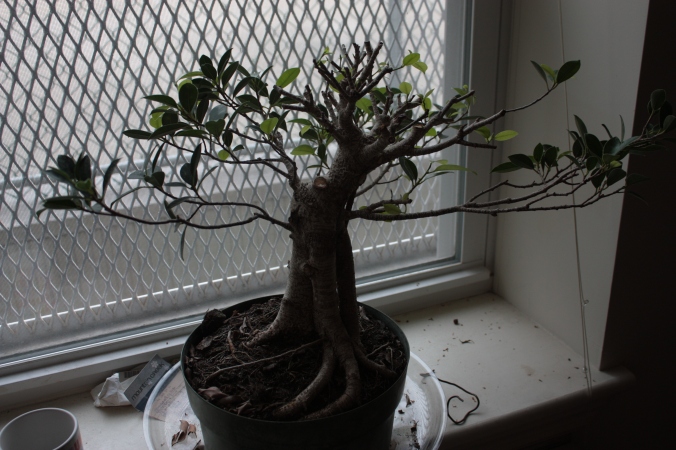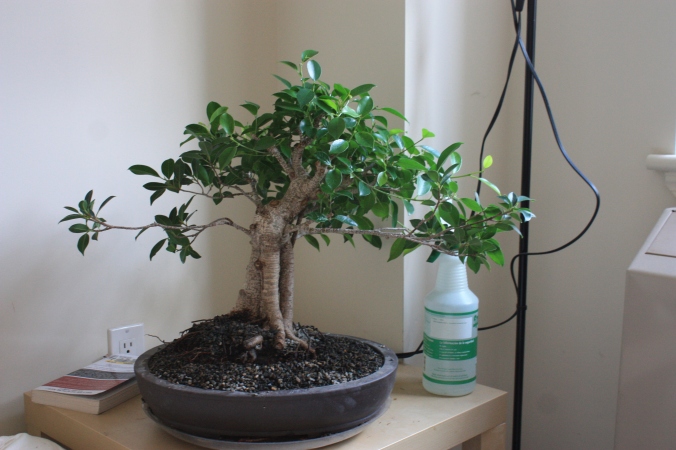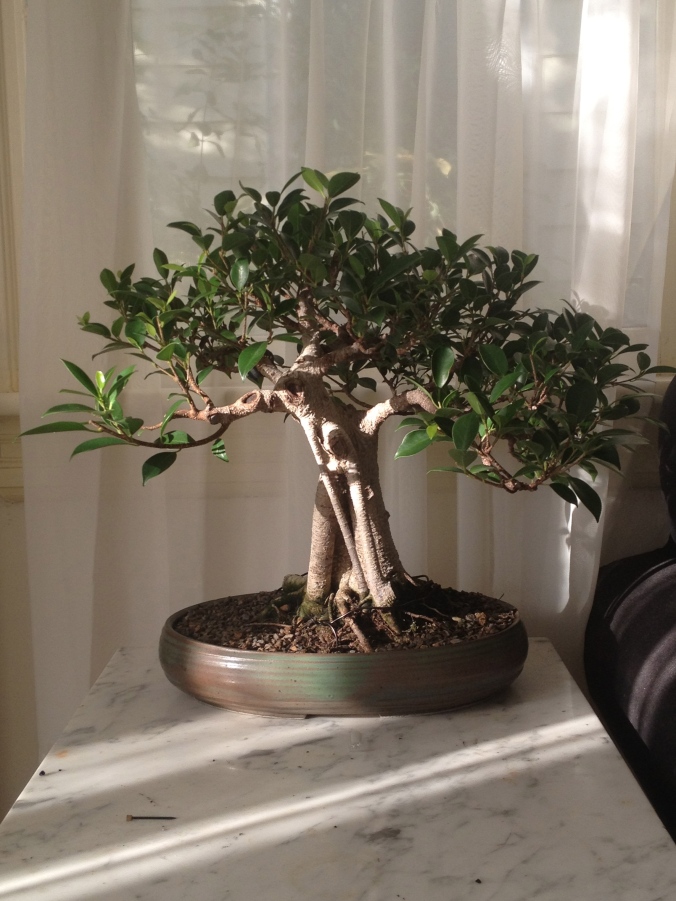The very best tree for a beginner to own, bar none, is one that she or he has researched extensively. I’ve always kept a small zoo of animals and if you look online this snake or that snake is always described as being a ‘beginner’ animal, but the truth is these creatures want to live and if you provide the appropriate environment they will. The same is true of trees. Critical to bonsai is correct effort at the correct time. If you know what those actions are, the time they are to be performed and can provide the correct environment for your tree you would have to be very unlucky indeed to kill it.
With that said, the reason that both trees and snakes are described as ‘beginner friendly’ is because they will tolerate your fuck ups.
Advanced artists can make a triple axel look easy, the cultivation of exotic and endangered Kihansi spray toads a simple task or the transformation of raw yamadori into exquisite bonsai an afternoon of relaxation. Beginners are not so lucky. Where the advanced artist can sculpt clouds with only the finest glaze of paint or form an apex with a simple twist of the foliage, beginners are stuck poking themselves with the tip of the wire, clumsily snapping a branch due to a lack of wire support, pruning and then thinking “Shit, I should have kept that one.” Watching the youthful efforts of nascent bonsai artists is like watching a foal learn how to walk. It is uninspiring, somewhat cute and instills in the veteran a dreadful urge to say “Here, let me do that for you…” Beginners should be wary of such assistance, it offers nothing in the long run.
So what tree do you get if you’re not sure if you’ll fuck up? Well, I will share my early efforts with more than a trace of shame.
This was my very first bonsai. It has several things going for it that informed my decision to purchase it. Strong, unrefined growth, a thick trunk and interesting roots. I had gazed longingly for years at the ficus of Min Hsuan Lo, Amy Liang, Jim Smith and Jerry Meislik. I had done my research and knew the tree could live indoors. Then I decided to screw everything up.

First I chopped the tree nearly to death in cold December. My reasoning was that ‘Hey, it’s indoors, it should be fine!’ Wrong, wrong, wrong.

Then I decided to root prune it and repot it in January. I had read that cat litter could be used as bonsai soil, so I bought cat litter. Unfortunately for me, it was not the right kind of cat litter – in Europe they use diatomaceous earth for the feline presents, which makes fine, great bonsai soil. Here in the states we use clay that immediately clumps up into a wad, allowing no liquid to run through the tree. This is absolutely terrible for bonsai. Soil arguments may rage about which is the best mixture or component, but every single bonsai artist will say that this mixture has no virtue and no use for bonsai.
Fortunately for me and the tree, I repotted it into something more habitable and buried the root ball. I did everything wrong with this tree that someone could. Sloppy wiring, poor choices about pruning, repotting out of season, repotting into quite possibly the worst soil mixture known to man and it kept on kicking, pushing growth because it was healthy. More than that, it seemed like it was basically cooperating with me, putting out growth at the right areas and the branching out exactly how I wanted it to. The growth was predictable and reliable and I experienced basically 0 dieback.
And this is what you look for in a beginner tree. The ability to tolerate fuck ups, boneheaded mistakes, and ignorant choices, then, despite it all, survive. More than survive, develop, move forward and grow into something greater. Ficus will do this for you. They will bud where you want them to, regrow lost branches easily, survive bad care and still (STILL!) allow you to realize your vision.
It is with this ficus that I learned the two most important lessons of bonsai:
1) The tree wants to survive, wants to grow and, if you listen closely, it will tell you what it needs.
2) Bonsai is not about domination or control, but is about cooperation with your tree, guiding it into maturity.
I can think of no better species to learn these from. Unlike juniper and pine, these trees communicate readily, letting you know that they need water or fertilizer in turn. They have simple requirements needing to spend their summers outdoors and their winters indoors in all but the most tropical of climates. As you can see, their durability is nearly unmatched.
The tree is still with me today, four years later, much more refined, and remains one of my favorites for these very reasons.
My photography has, perhaps, also improved.



Reblogged this on Tree in my Palm.
LikeLiked by 1 person
Reblogged this on Wolf's Birding and Bonsai Blog.
LikeLiked by 1 person
An encouraging post for someone like me whose trees are still tolerating lots of schoolboy errors. Thanks 🙂
LikeLiked by 1 person
Hey no problem,
I’m still making quite a few errors myself. If you make them even uglier they become features though 😀
LikeLiked by 1 person
I have killed many a ficus, and finally gave up. However, I just received one from Home Depot as a gift. I have taken it out of the glued on gravel, added some lava rock to the soil, and put it in a decent pot. We’ll see what happens. I am amazed that it has only been four years for you. You have progressed significantly, but the you are bright and you live close to bonsai experts. A good message to all beginners.
LikeLiked by 1 person
I’ve found that they’re just hungry, hungry plants, that want light, water and food in abundance. I’ve had success keeping them on completely inorganic substrate, even indoors. I’ve had trouble keeping them indoors though, even with light supplementation; I have access to a greenhouse for overwintering purposes, so that might make all the difference.
Thanks for the compliments, I’m blushing. I think it’s less my virtues, and more those of my friends. I started listing the people I’ve met through bonsai who have offered me guidance, support, training and advice and I wrote a full half page! The community has been very kind to me.
LikeLiked by 1 person